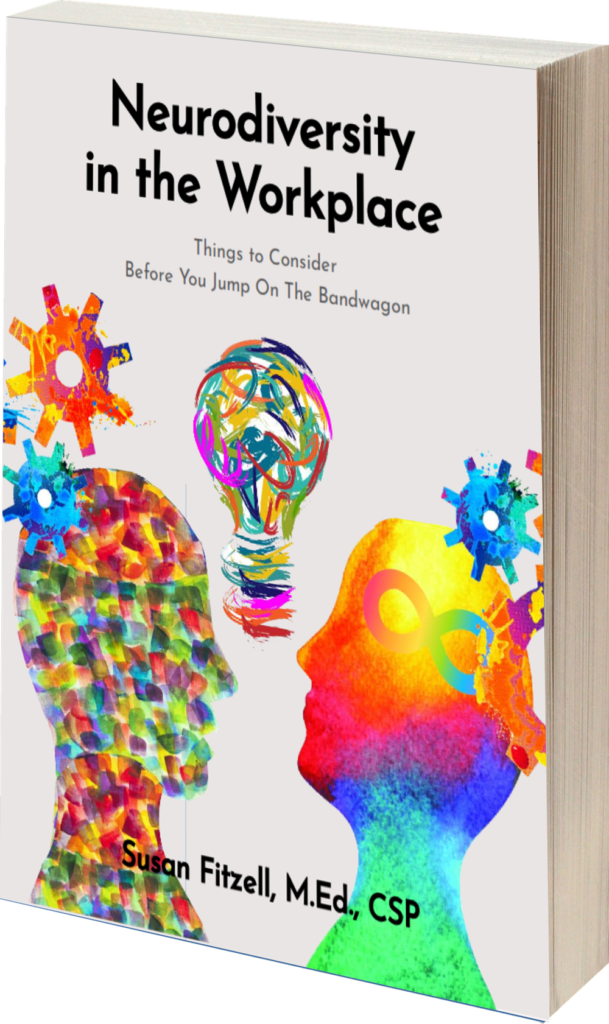A brief guide for managers: How to help neurodiverse employees set goals — job-related, task-related, and career-related — and follow through on them.

Managing a neurodivergent employee — someone with autism, dyslexia, ADHD or another diagnosis — can be a perplexing challenge. Each neurodivergent employee is an individual with their own unique set of skills and challenges. Some have trouble retaining information, and others have trouble focusing, and so on. How do you, as a manager, help neurodivergent employees meet their goals successfully?
Empathy is an important skill for managers, especially when one or more of their team members is neurodivergent.
Determine whether you need to adjust the process to accommodate the employee.
Neurodivergent people often process information differently and, therefore, may approach a task from a different angle or at a different stage of the process. Find out as much as you can about how employees address specific tasks and what they understand about the tasks they are assigned. Then, adjust the process where possible.
What would this adjustment look like?
Approach the employee with curiosity and a positive willingness to listen to their approach to a process, task, or situation. Genuinely show interest and empathy in the interaction. It’s amazing what you can learn about employees when you take the time to listen to their take on their job and related tasks. These divergent thinkers who do things differently may astound you with how their process may be even better than the status quo way of getting the work done.
One of my clients had an engineer who was smart and capable but who was not filling out the required reports on time. The problem was not willful noncompliance by the employee. We determined that the employee had trouble remembering sequential instructions and could not access and use the reporting system very well. Additional hands-on instruction and a written “cheat sheet” helped resolve the problem. The manager was able to extend the reporting deadline so that the employee could file their reports correctly.
How does the employee best retain information?
For example, a person with ADHD or in the autistic spectrum may have trouble listening to and recalling verbal instructions, especially if they are complicated or have several sequential steps. A written recap with step-by-step instructions is extremely helpful. For some employees, a video recap from a zoom meeting or screen capture video “How to” instructional session would be invaluable.
Some employees remember details better when they are shown the task or when they perform the steps under instruction. Have a team member work directly with them to walk through the task a few times. Record the tutorial so it can be accessed by the employee for review later.
Is anxiety hampering employee performance?
One client I work with has an employee who is brilliant but who has trouble delivering information to an audience of any size — be it in a team meeting, a large conference room, or at an event. Another client has employees who get overwhelmed when presented with a large project or a large task outside their normal, daily work.
How to minimize anxiety
To reduce their anxiety, help them prepare, whether it’s for a presentation or achieving a specific goal.
- Break down the project into smaller, easily achievable steps. Give each step a mutually agreed-upon deadline.
- Communicate by sending a recap each week (or each day, if necessary) of the goal, the steps they have already completed, and the next step on the list.
For presentations, hold a rehearsal, or two, or three! There’s a reason why actors rehearse plays for months before a performance. Presenters need to rehearse, too.
- Have the employee present in front of one person. Then, have them present in front of the team.
- Go over scenarios that may happen during a presentation and determine how to handle each potential scenario. What if the microphone cuts out? What if the projector doesn’t work that day? What if a moderator asks a curve ball question — how do they field that?
Most importantly, listen to your employees. Often, they can see a different way to approach a problem or task and get the same result. If they know that they can explain this to you, without judgment or being told they must do things exactly the way they are originally laid out, then they’ll be much more confident in telling you when there’s an issue. When you work with them to find a solution, they’ll feel respected and seen, and that their contribution to the team makes a difference. It’s an absolute win-win when you approach goal-setting with an open mind, open ears, and real empathy.
Photo Credit: BalanceFormcreative, iStockphoto standard license
If you enjoyed this article, join my email list to access all of my free neurodiversity in the workplace guides, including my eBook “Neurodiversity in the Workplace; Things to consider before you jump on the bandwagon. ”
Susan is a recognized authority in the learning and collaboration space. Her ‘lived experience’ as a neurodivergent, combined with her three-plus decades in the field of learning disabilities and neurodiversity, uniquely qualifies her as an expert in this field. Because she understands the struggles of someone whose brain is wired differently, she is passionate about creating a world that empowers and values neurodivergent talent.
Sources:
https://www.neurodiversityhub.org/resources-for-employers
Neurodiversity Definition
Neurodiversity: this term refers to a general diversity of minds. It includes people who are neurotypical and neurodivergent. When I talk about promoting neurodiversity in the workplace, for example, I am referring to creating a diverse workforce representative of the broad spectrum that exists when it comes to ways of thinking, processing information, communication, and learning. Some employees may be “normal” or neurotypical while others may have ADHD, Dyslexia, Autism, or trauma impacted ways of thinking. I am not referring to any particular label or diagnosis, but rather, the concept of an environment where a diversity of minds coexist.
Neurodiverse: This word is pretty much the same as neurodiversity, but should be used as an adjective. You can say, for example, that your workplace is neurodiverse.
Be careful though, because you should never describe a person as being neurodiverse. Individual people should be described as neurodivergent.
Neurodivergent: This word describes an individual whose way of thinking falls outside of society’s defined version of normal. Oftentimes you will see it abbreviated as ND.
Many times, neurodivergent people will have a diagnosis or label you may recognize, like autism, dyslexia, or ADHD. But neurodivergent people are also those with epilepsy, different kinds of brain trauma, or simply a unique way of thinking that may not have a specific diagnosis.
CLICK HERE to visit the articles page.
 FREE DOWNLOAD: Neurodiversity in the Workplace: Things to Consider Before You Jump On the Bandwagon
FREE DOWNLOAD: Neurodiversity in the Workplace: Things to Consider Before You Jump On the Bandwagon
Neurodiverse hiring practices can benefit any company in any industry and in more areas than most people realize. The investment has yielded greater patenting, innovation, process improvement, efficiency, and creativity not only in technology industries but also in industries that include investment banking, insurance, and mortgage banking.
This resource explains the term “neurodiversity” and describes the potential positive impact on your business that can come from including neurodivergent individuals in your workplace.
Download Neurodiversity in the Workplace! – Free!
Bring Susan Fitzell, M.Ed., CSP
Top Neurodiversity Speaker
To YOUR Organization!

